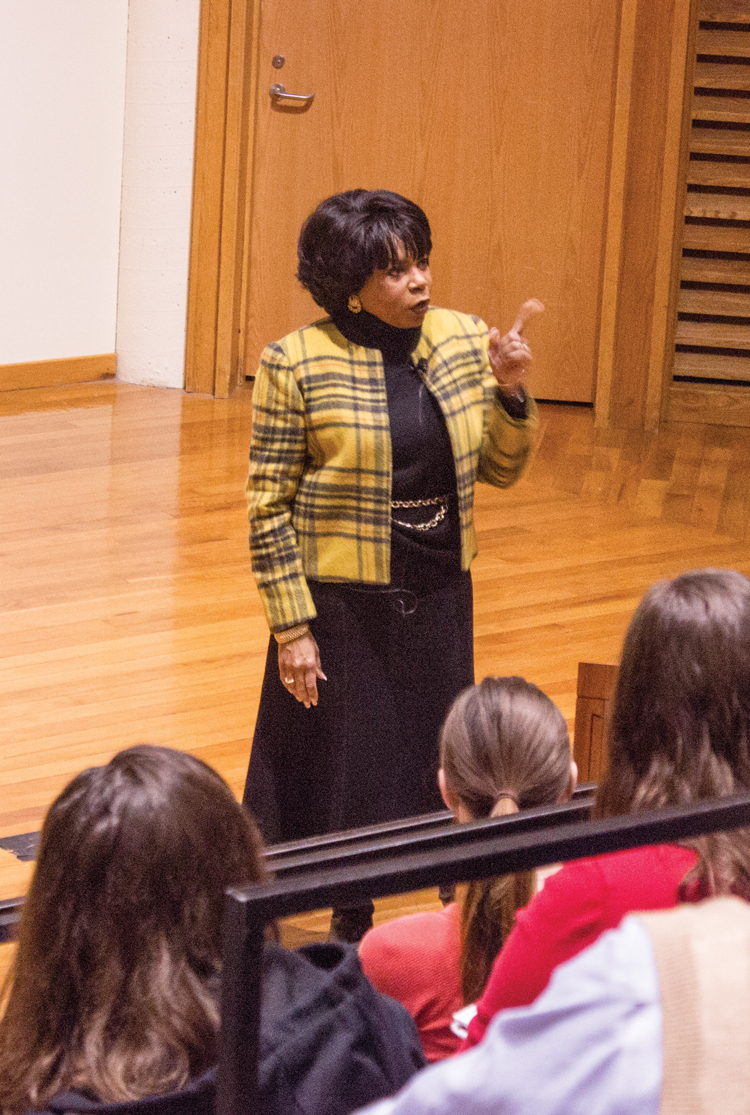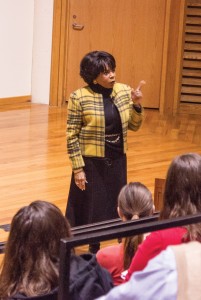
By Hannah Davis

Cheryl Brown Henderson, daughter of the lead plaintiff, Rev. Oliver Brown, in Brown v. Board of Education of Topeka and founder of the Brown Foundation, gave two lectures at the college on Feb. 12 and Feb. 13.
“Her evening presentation is part of the Kansas Lecture Series, which annually hosts an event by a noted Kansan or someone whose work is relevant for Kansas issues,” James Leiker, director, Kansas Studies Institute said. “Since the Brown case of 1954 had such a large national impact, having emerged from the work of an active African American community in Topeka as well as others from around the country, her content merits attention both by those interested in Kansas history and in Black History.”
Her first lecture, “Brown v. Board of Education – Voices of the Legacy” was held on Feb. 12 at 11 a.m. in the Craig Community Auditorium, and her second lecture, “The Judicial Past of Kansas – Giving Meaning to the 14th Amendment” was held the following day at 7 p.m. in the Hudson Auditorium of the Nerman Museum of Contemporary Art. The presentations addressed the legal activism of the African-American attorneys, the intended and unintended consequences of the Supreme Court’s decision, the relevance of Kansas history to civil rights and the myths surrounding the landmark case.
“I learned how the history books from elementary school made [Brown v. Board] sound, but that’s not what the story was like,” Austin Mora, student, said in response to the first lecture. “I thought it was interesting. It’s our recent history and puts Kansas on the map of history.”
Brown Henderson acknowledged that the case, though primarily about segregation in schools, was part of a larger movement.
“Public school was the battle ground, but society was the target,” Brown Henderson said.
Brown Henderson stressed the hierarchy that was embedded in the roots of this country, citing the U.S. Constitution, in which it apportioned Native Americans as three fifths of persons, the Supreme Court decision in Dred Scott v. Sanford, which denied citizenship to black persons, and Plessy v. Ferguson, which established the “separate but equal” doctrine.
“I think Brown v. Board was, in fact, the case that gave the Supreme Court the opportunity to interpret the 14th amendment,” Brown Henderson said. “It impacts our lives because it made it clear, we have sovereign rights.”
These rights, including those protected in the 14th amendment, are still being defined by the courts today.
“We are still debating the meaning of the 14th amendment as to what ‘full, equal citizenship right’ actually means,” Leiker said. “Does it mean the right to a living wage? To health care? To safety and security? It’s the foundation for many discussions today about what ‘rights’ we as American, and human beings, have.”
Brown Henderson hopes that the decision of Brown v. Board and the definition of the 14th amendment will continue to lead to progress in tolerance and equality.
“As human organisms, we are absolutely the same,” Brown Henderson said. “We really need to grow up and realize we all want the same things. We all want to enjoy the lives that we have.”
Contact Hannah Davis, news editor, at [email protected].





















